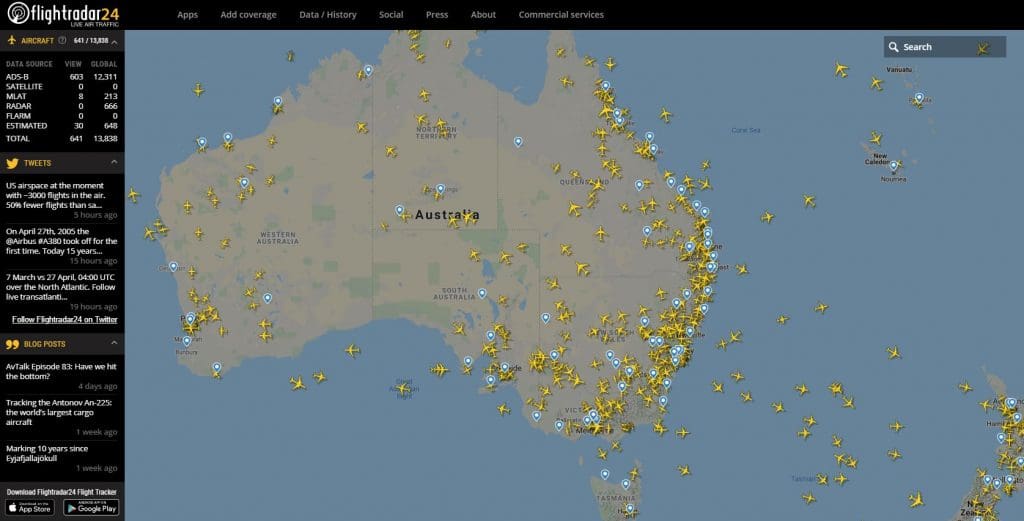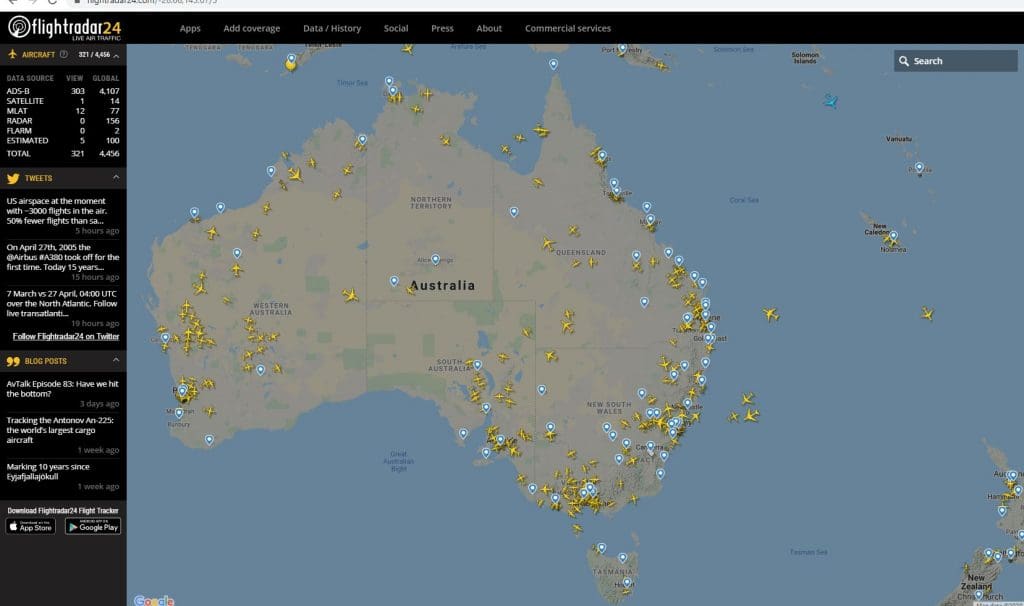THE dramatic reduction in aviation traffic due to COVID-19 restrictions is unlikely to make any appreciable difference to the accuracy or timeliness of weather forecasts and warnings for Australia, according to the Bureau of Meteorology.
The cutback in flights has meant a big drop in the number of aircraft-based observations available to weather prediction centres.
A spokesperson for the Bureau said forecasters did not rely on any one system and used a broad network of data sources, infrastructure, computer modelling and meteorological knowledge to generate forecasts and warnings.
Among the other sources of weather observations are satellites, a network of about 600 automatic weather stations, weather balloons and the nationwide fleet of over 60 weather radars.

Mid-morning aircraft movements over Australia/New Zealand two months ago on February 28, 2020. (Source: FlightRadar24)

Mid-morning aircraft movements over Australia/New Zealand yesterday, April 28, 2020, showing the dropoff in traffic. (Source: FlightRadar24)
The Bureau’s spokesperson said Australia had less reliance on aircraft observations for its forecasting than many other countries.
“This is because Australia has a much smaller proportion of commercial aircraft in the air to start with, compared to other parts of the world such as Europe and the United States.
“Commercial aircraft also cover a much smaller proportion of Australian airspace when compared to places like Europe and the US.”
Global impact
One of the main sources of aircraft-based observation for global weather forecasting is the World Meteorological Organization’s (WMO) Aircraft Meteorological Data Relay (AMDAR) program.
In a recent article titled “Drop in aircraft observations could have impact on weather forecasts”, the European Centre for Medium-Range Weather Forecasts (ECMWF) highlighted how the reduction in flights had affected European AMDAR reports.
The ECMWF said aircraft reports were second only to satellite data in their impact on forecasts. However, recently added satellite wind observations would help to mitigate the drop in the number of aircraft-based observations.
It said many aircraft reports were provided by United States airlines, with particularly dense coverage over the US, but European and other programs also made significant contributions.
“We are anticipating the substantial reduction in the availability of US AMDAR data to continue over the coming weeks, likely to generate some measure of impact on the output of our numerical weather prediction systems,” the US National Oceanic and Atmospheric Administration’s (NOAA) Christopher Hill said.
ECMWF article: https://www.ecmwf.int/en/about/media-centre/news/2020/drop-aircraft-observations-could-have-impact-weather-forecasts
Grain Central: Get our free daily cropping news straight to your inbox – Click here

HAVE YOUR SAY